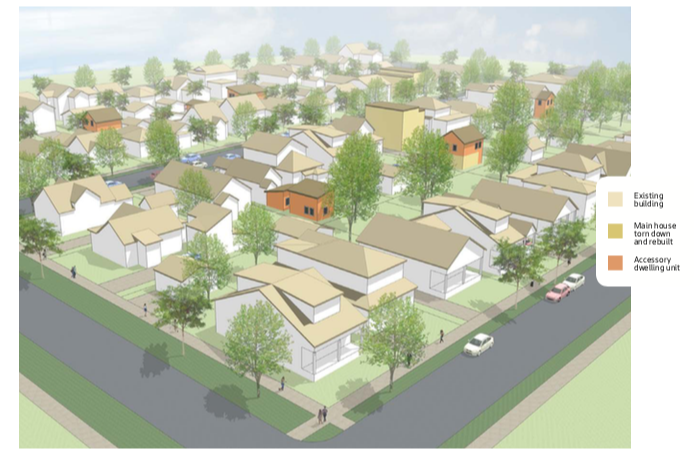Seattle, a city of 348,000 homes, has built just 579 backyard cottages since 1994, the year the region also enacted an urban growth boundary limiting suburban sprawl at the region’s fringe. A more consequential 1,591 mother-in-law apartments have been built in the city during the same period.
The city, spearheaded by Councilmember Mike O’Brien, is trying to reform backyard cottage regulations (more formally referred to as “accessory dwelling units” or “ADUs”) as a way to expand housing options for families, create affordable housing, and provide residents with a means to generate extra income if units are rented.
On May 10th, the Seattle City Council issued a Draft Environmental Impact Statement (DEIS) analyzing three primary alternatives. One alternative would maintain the status quo while two alternatives considered various strategies to relax regulatory requirements, such as parking and owner occupancy standards, while adding affordable housing contributions. A 45-day comment period is open on the DEIS, after which the Council Central Staff will prepare and issue the Final Environmental Impact Statement (FEIS). Once those milestones are completed, actual reform legislation could be considered and adopted by the city council.
Background and Context
This extended environmental review process was the result of an appeal to the threshold determination by the Office of Planning and Community Development in 2016. Martin Kaplan, an architect and resident of Queen Anne, led the appeal against the city’s Determination of Nonsignificant under the State Environmental Policy Act, which was reviewed by the city hearing examiner. The hearing examiner sided with the appelant requiring additional environmental review on several grounds, including displacement, aesthetics, parking that could be impacted by the proposed land use reform. By more thoroughly evaluating these issues, the Enivormental Impact Statement process could result in different regulatory choices to mitigate impacts, if deemed necessary or desirable.
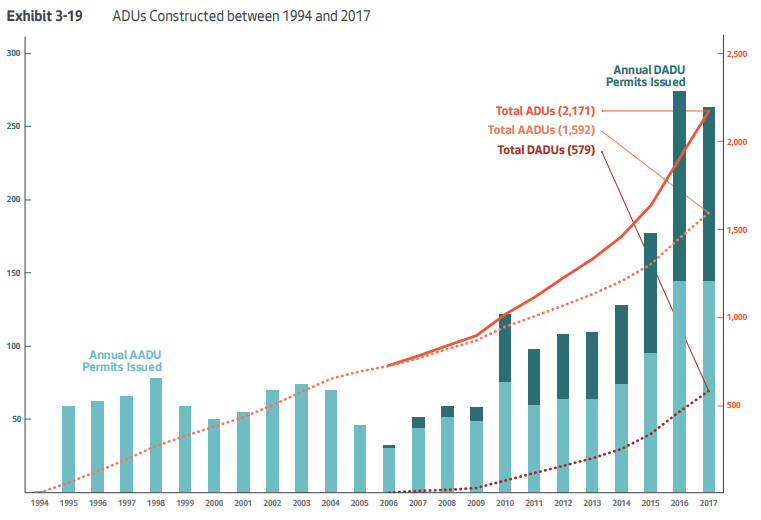
Earlier this year, the released a summary report of scoping comments received last fall, which suggested what issues should be specifically evaluated through environmental review. The DEIS has responded to those comments by touching on issues in the following five key topic areas:
- Housing and socioeconomics;
- Land use;
- Aesthetics;
- Parking and transportation; and
- Public services and utilities.
Key Differences Between Alternatives
The DEIS provided some important statistics showing how the different alternatives would perform in the years ahead. Alternatives 2 and 3–the action alternatives–would each add extra ADUs, both attached and detached–over the status quo. The city projects Alternative 1 would result in 1,890 new ADUs through 2027 while the reforms in Alternatives 2 and 3 would net an additional 1,200 to 1,400 ADUs beyond the status quo. Alternative 2 would produce the most ADUs with its 3,330 slightly outperforming Alternative 3’s projected 3,100 total, according to the DEIS.
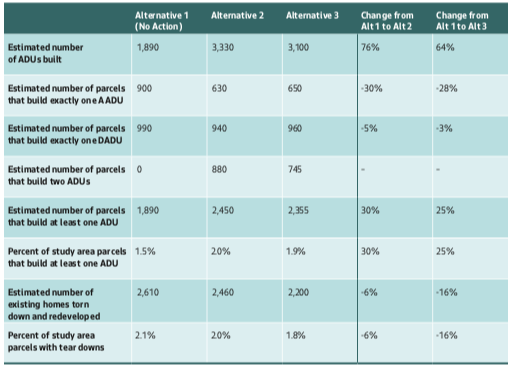
The DEIS also summarizes several different approaches to reform of backyard cottage regulations. Alternatives 2 and 3 share many of the same elements of reform, such as minimum lot size, lot coverage, and roof features but are also analyzed with slightly divergent regulations for parking and number of ADUs allowed on a lot.
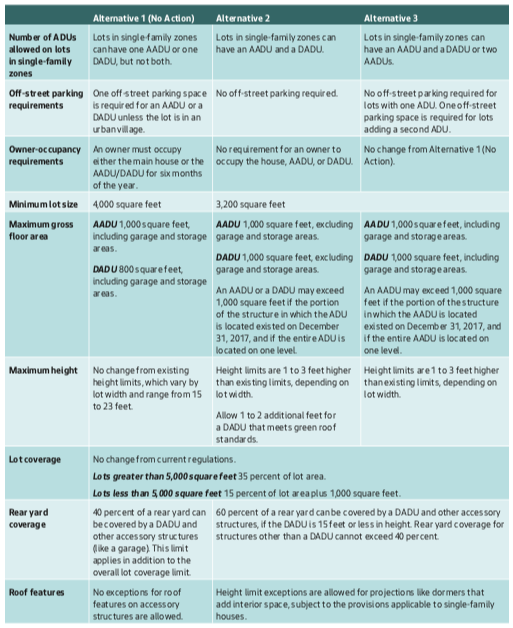
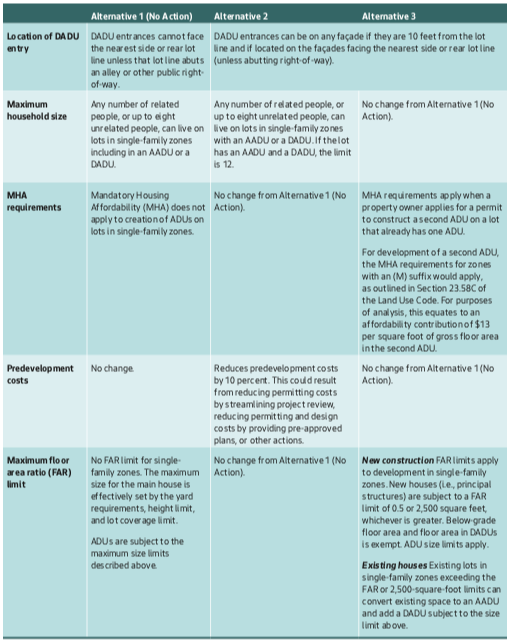
Some of the big differences between the action alternatives include the following:
- Owner-occupancy. Alternative 3 proposes to retain the owner-occupancy requirement for ADUs while Alternative 2 would eliminate the require for the property owner to live in one of the on-site dwelling units on a regular basis.
- Off-street parking. Alternative 2 would fully eliminate the need to provide off-street parking for ADUs while Alternative 3 would only require off-street when a second ADU is proposed on-site. Regulations currently require parking for ADUs located oustide of an Urban Village.
- Number of ADUs. Alternatives 2 and 3 would both allow two ADUs on a lot, except that Alternative 2 would only allow one detached accessory dwelling unit (DADU) and one attached accessory dwelling unit (AADU) on a lot while Alternative 3 would allow that scenario or two AADUs.
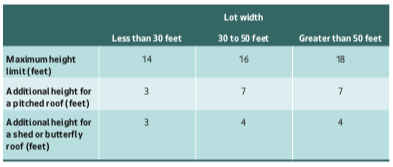
- Maximum height. Building height maximums would increase under either action alternative, but Alternative 2 could allow an extra one to two feet in maximum building height for DADUs using green roofs.
- Mandatory Housing Affordability (MHA). Only Alternative 3 would require participation in the city’s affordable housing contributions program (MHA) for ADUs. The requirement would kick in only when a second ADU is constructed on a lot.
- Floor area ratio (FAR) maximum. Likewise, only Alternative 3 would introduce new FAR maximums for development in single-family zones that applies to new primary residence construction. These residences would be subject to a 0.5 FAR limit or maximum of 2,500 square feet of construction per lot, whichever is greater. Square footage below ground would be exempt from the maximum in addition to DADUs. Other size maximums on ADUs would still apply.
- Household size. Alternative 3 would retain the maximum household size of eight unrelated persons living on a lot. Alternative 2 would increase this number to 12 when two ADUs existing on the same lot.
In addition to the difference between the action alternatives above, several key changes could be made in common by both action alternatives over the status quo:
- ADU size. Under both action alternatives, DADUs would increase from a maximum of 800 square feet to 1,000 square feet. Additional exceptions for extra size could be built into the Land Use Code for existing ADUs.
- Minimum lot size. Both action alternatives would lower the minimum lot size to construct ADUs to 3,200 square feet–the existing standard is 4,000 square feet.
- DADU entry. Alternatives 2 and 3 would make it easier to locate DADU entryways to all sides of the structure so long as the entryway is at least 10 feet from the nearest property line or located toward public right-of-way.
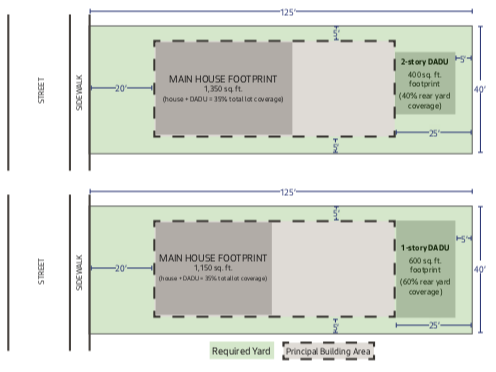
- Rear yard coverage. Under both action alternatives, rear yard coverage for DADUs and other accessory structures could rise from 40% to 60%, provided that the DADU does not exceed 15 feet in height.
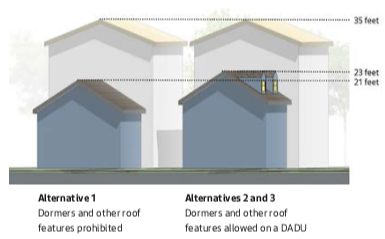
- Roof features. Both action alternative could result in exceptions from height for certain features like dormers.
Next Steps
Many of these proposed changes represent significant lifting of restrictions on ADUs, which could spur further interest by landowners in development of them and adding hundreds of new housing units over the status quo. The differences between the alternatives, however, are fairly consequential. The number of unrelated persons allowed on a lot, off-street parking, and maximum building height standards, for instance, could result in widely different outcomes in ADU interest and construction.
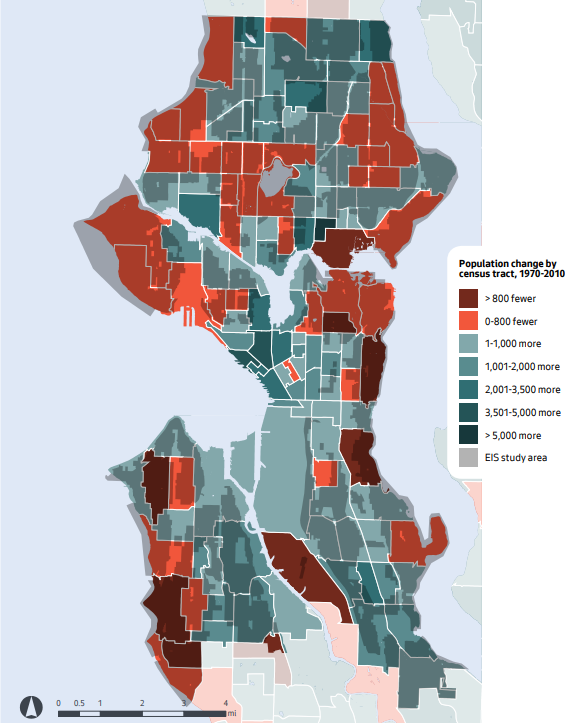
The Environmental Impact Statement process is meant to evaluate the tradeoffs between alternatives. Depending upon public feedback, the alternatives could be further refined picking and choosing features from the DEIS alternatives to develop a consolidated preferred alternative in the FEIS.
An open house and public hearing on the DEIS will happen on Thursday, May 31st. The open house will kick off at 5.30pm and be followed by the public hearing at 6.30pm in the Bertha Knight Landes Room at Seattle City Hall. Council Central Staff is also accepting comments online during the full 45-day comment period.
Regardless of what happens with the backyard cottage regulations, the city is looking to streamline the permitting process for them. The Seattle Department of Construction and Inspections (SDCI), for its part, will develop several pre-approved DADU designs that prospective applicants can use to expedite permit approvals and save money. SDCI will consult with architects to draft the pre-approved building designs to satisfy code requirements. Through the process, SDCI will also work with stakeholders and communities for input on design approaches. Ultimately, this could help get more DADUs built quicker and aid novice homeowners better traverse the complexities of permitting.
Stephen is a professional urban planner in Puget Sound with a passion for sustainable, livable, and diverse cities. He is especially interested in how policies, regulations, and programs can promote positive outcomes for communities. With stints in great cities like Bellingham and Cork, Stephen currently lives in Seattle. He primarily covers land use and transportation issues and has been with The Urbanist since 2014.

